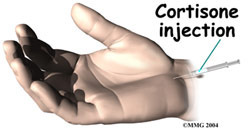Julie A. Fast's Blog, page 44
January 21, 2015
Do You Have A Helping of Chronic Pain and Inflammation Along with Your Bipolar Disorder?
 I do! I’m currently eating a Paleo diet with the autoimmune protocol (no nightshades, dairy, etc) to deal with an intense back and hip injury from a biking accident. When I say I’m eating a Paleo diet, I means I’m working it, but I haven’t reached a point of following it completely.
I do! I’m currently eating a Paleo diet with the autoimmune protocol (no nightshades, dairy, etc) to deal with an intense back and hip injury from a biking accident. When I say I’m eating a Paleo diet, I means I’m working it, but I haven’t reached a point of following it completely.
The Paleo concept isn’t complicated. Many of the foods we eat today are so new our bodies are not always able to digest the foods in a natural way. This way of eating isn’t about losing weight, it’s about ending physical problems. The basics: You eat nutrient dense foods with an emphasis on meat, vegetables and fruit. Grains and legumes are not consumed due to their propensity to cause digestion problems. This is why beans, beans the edible fruit, the more you eat the more you toot happens! Some people eat dairy, but for myself the resulting digestive problems have made it obvious I’m not able to digest the lactose at this time, etc etc. It’s a very personal diet that represents a life style and not a quick fix.
I have so many emotional issues around eating and my bipolar disorder that changing my diet completely wasn’t a realistic beginning goal. I’m taking it slowly!
I’ve lost 35 pounds so far- I have miles to go before I sleep and many promises to keep and… I’ll stop the poetry here, but you get the idea! I was overweight when the accident happened, but quite healthy. I have 60 pounds to go and will keep you posted!
My advice?
If you have bipolar disorder and any inflammation problems from joint pain and fibromyalgia to tiredness, bad skin and bloating to being overweight, the Paleo approach offers an alternative to living a life in pain. My goal is to one day follow it fully over a long period of time. It’s what I have to do in order to stay out and about. I got my life back- I feared my injury ( crumbling back, dislocated hip, slipped pubic bone and the resulting ligament and muscle damage from the biking accident) was permanent and that the chronic pain would continue. Paleo gave me a free ticket to a happy life in a strong body. Following it is a BIG, TOUGH and DIFFICULT challenge, but I will not stop until I have a strong and trim body that can hold up my crumbling spine!!!
I taught myself to manage my severe bipolar disorder two. I can do the same to create a strong and healthy body!
I recommend the book The Paleo Coach as a primer. I’ve met the author Jason Seib and he is the real deal.
Julie
Related posts:
Can Pets Help with Bipolar Disorder Mood Swings? Can Pets Help with Physical Pain?
My Mother and Bipolar Disorder
Bipolar Disorder and a Low Carb Diet
January 17, 2015
Bipolar Disorder II and Psychosis
 I call psychosis the forgotten bipolar disorder symptom!
I call psychosis the forgotten bipolar disorder symptom!
My bipolar psychosis started at age 19. I consistently had hallucinations of seeing myself killed and thought it was normal! I eventually learned to manage my psychosis, but it sure would have helped if the health care professionals in my life had explained the symptoms of psychosis and that it was a normal part of the bipolar disorder diagnosis!
I just received the following question from Mario on the topic:
Julie, I thought that people w/ Bipolar II don’t get psychotic? Or did you have a psychotic depression?
Hi Mario,
Believe it or not, I’m writing an article on psychosis right now. People with bipolar II can definitely get psychotic. I’ve had psychotic symptoms since age 19. Mine are always with depression – as it’s rare for someone with bipolar II to have psychosis with hypomania. One reason I can identify with so many forms of bipolar disorder is the psychosis. I have hallucinations and as I got older, delusions!
The difference for those with bipolar two who have psychosis is in intensity- people with bipolar I have full blown psychosis – usually with mania. In fact, 70% of people with full blown mania have full blown psychosis at the same time. This is when most people with bipolar I have to go to the hospital and often have to be committed by a family member.
If you have bipolar disorder or care about someone with the illness, it’s essential that you learn about the signs of psychosis. I have a psychosis Health Card (my treatment plan) and am especially careful to look for paranoia (a psychotic delusion) when I’m speaking in public!
Thanks for writing!
Julie
PS: Here is an explanation of the difference between bipolar i and bipolar II. If you are new to bipolar disorder terms, I think you will find this helpful.
Related posts:
Reader question on psychosis……
Reader Question: What is the difference between schizophrenia and bipolar disorder?
Bipolar Disorder and Brain Chatter
January 13, 2015
Hello Australia! Bipolar Disorder and Light Exposure. Four Keys to Successfully Manage the Illness on Sunny Days
Bipolar disorder mood swings in the sunny, Australian winter. It’s not easy to figure out how sunlight and darkness affect bipolar disorder. It’s often as much to do with WHEN you are exposed to light and darkness as how much. Learning about your circadian rhythm is essential. Read Geralyn’s question below and think of how you would answer. I’m interested to then know how you feel about my answer as it might be different than you expect!
I just received a Facebook question from Geralyn in Australia.
“Hi Julie, did you know that in the part of Australia where I live the worst time for bipolar swings is Summer not Winter because you have to keep heat out by shutting curtains etc. which means less light. I’m having hypomania, I’m taking my medication – any other tips you could offer to stop it getting worse?”
Hello Geralyn, I didn’t know this about Australia. It makes sense though. I remember being in Thaliand where it was so hot I would just go back to my room- shut all the curtains, turn on the fan and just I didn’t melt. It WAS dark in that room! Here is my answer to your interesting and thought provoking question:
Hypomania and depression require different plans: Since you’re having hypomania, what you do light wise is different than what you would do when depressed. Believe it or not, being in the room in the dark is good for hypomania- the problem is the balance of light when it’s so bright outside for so many hours of the day. I would suggest that being in a dark room isn’t the problem- it’s actually what you need to do if the hypomania is persistent. If you were having severe depression, it could be about the darkness. You may be experiences a lot of depression as well, but for now let’s talk about what everyone with bipolar needs to do regarding light and mood swings when they are having hypomania.
We talk so much about light exposure and depression and it is a problem, but the interaction between light and our mania is just as important.
Here are four keys to managing mania when it’s sunny outside…..
The main goal is to create a circadian rhythm plan that makes sure you get light at the right times. The interaction between melatonin and serotonin holds the key to light exposure and mood swings. If it’s sunny all day- the constant light into the retina affects the brain chemicals that control the balance between melatonin and serotonin to the point that many people with bipolar one will have severe mood swings in the summer simply from the extra light. My coauthor Dr. John Preston has been my teacher on the topic of light, sleep and bipolar disorder for ten years now- I recently attended a full day seminar he put on here in Portland, Oregon where we have the exact opposite of what you are going through. Six months at least of darkness and rain is the norm here. I learned so much from talking with him. Here’s the latest information:
1. It’s about when you get light if you have bipolar disorder- not always how much. When it’s bright outside, we need to end light exposure starting in the early evening so that our natural production of melatonin can kick in and start to make us tired. This melatonin stops the production of the highly active serotonin that wakes us up in the morning. To make this happen during the bright days, Dr. John suggests .5 mg of melatonin four hours before bed. Yes, it’s a super small dose but the latest research shows that too much melatonin is detrimental to those of us with bipolar.
Tip: No matter what’s happening with your sleep schedule and no matter how much light there is outside- .5 mg of melatonin will help get your circadian rhythm on track. This helps build a sleep foundation that promotes stability.
2. During sunny times- the amount of light that goes into your EYES is the problem. It’s not about light getting into the skin- that’s more of a vitamin D situation and is more related to depression. Light stimulates the brain chemicals that create the energetic serotonin. This is why mania peaks in the sunlight. We do need light in the morning to stop our melatonin, but it has to be limited and targeted due to the fact that light in the eyes can create mania. During the sunny days, it’s essential to get light into our eyes in the morning for a few minutes- this will stimulate our circadian rhythm to wake us up- but then super bright light in the eyes needs to STOP until the next morning. Thus, waking up and going outside and looking at the sun for a few minutes in the morning only is the key. You will then need to use strong sunglasses, visors, hats etc. to reduce ALL bright sunlight into the eyes for the rest of the day. This is why being in a dark room isn’t a bad idea if you’re having hypomania. It’s probably the daily contrast of the light in the morning, being in a dark room, going back into the light and then trying to sleep at night that’s the problem. I know it seems like the dark room is causing the mood swing, but it’s probably more about not getting the circadian rhythm process on track do to the constant change in light that’s the culprit.
Tip: During sunny times, wake up and get sunlight into your retina in the morning for a few minutes (20 at most) and then spend the rest of the day limiting the sunlight into your eyes. This is especially true if you go to the beach or are out in the open sun . You want sunglasses that are so dark it feels a bit abnormal. Your brain will thank you.
3. Darkness is associated with depression even if it’s not actually making us more depressed. When you have bipolar disorder, darkness can feel oppressive, dangerous, sad and hopeless. It’s hard to explain to others who don’t have such a visceral response to their environment, but for anyone with bipolar we know that how we feel in an environment profoundly affects our moods. Once you have stimulated your circadian rhythm, you can then start modifying the darkness in your room with a smart use of light and other elements. Fish tanks with bright colors, plants with big bright leaves and other positive images can make a huge difference. It’s also fine to have full spectrum light in the room as long as it’s not too bright and you don’t look directly into the light. (Yes, the bipolar brain really is this sensitive.) What you do in the room is also important. Is it a happy place- do you enjoy being in your home, or do you feel crowded and unloved in the environment? It really does make a difference. Having a pet or loved ones around you will brighten any room. You didn’t mention air conditioners- if you are cool enough, one thing you can do is find blinds that let you completely control the amount of light which means you can let some in as needed. You are more in control of the dark room than you think. If the dark room is something you can’t change, then changing what’s in the room is the key. I still believe that if it’s hypomania and not serious depression that you’re experiencing, the dark room is not the main problem. I’m interested to hear more about how often you cycle into depression. Our environments completely affect our moods- and it’s not always about light. If you feel out of place where you are- this can lead to mood swings as well. Especially if your hypomania is dysphoric where you feel uncomfortable everywhere and home isn’t a sanctuary.
Tip: If the dark room is a necessity heat wise, modify the room to make it a cheerful and light place using lighting, mirrors, candles, animals and possibly new blinds. When you’re in a place you love, it helps counteract the darkness. If the bipolar makes you uncomfortable everywhere- then it’s more about the illness than the darkness!
4. Electronic devices increase light into the eyes. The blue light that comes off these devises is no different than a light box. If you’re watching TV or on a computer, phone or tablet in a dark room, you will have a similar brain reaction to being outside. Amber glasses that block this blue light can make a difference, though they can make the dark room more gloomy. Knowing that this blue light- especially from a big television at night- can completely upset circadian rhythms will help you make better electronic decisions. Darkening your devices- making sure you aren’t using them right up until you sleep and possibly using glasses that block the blue light is an essential step in managing your moods. The contrast between the dark room and the blue light is a big problem when you’re trying to get stable.
Tip: Become more aware of how much blue light you get and try to keep it limited to the day and turn it off at least a few hours before you want to sleep. It doesn’t have to be like this always, but it’s essential to test it out and see if it helps.
These are just a few ways you can change your situation to create a plan to help manage the bipolar disorder. It’s easy to blame the darkness for the mood swings- when it actually could be the balance between when you experience the darkness and the light. We are learning more and more about circadian rhythms and bipolar disorder. Every single person with bipolar disorder must regulate when light hits the eyes. This is a free way to manage the illness more successfully. It changed my life and it can help you as well!
Thank you for your question Geralyn and hello to everyone in Australia and the Southern Hemisphere.
Julie
Here is a great resource to learn more about light and bipolar disorder. Dr. Jim Phelps pioneered the research in amber glasses and light exposure. His website PsychEducation.org offers research on the topic. If you aren’t aware of how light affects bipolar disorder, his site will certainly open your eyes. 
Related posts:
Tips for better sleep!
Seasonal Affective Disorder and Bipolar Disorder
Julie, how do you manage bipolar disorder so successfully?
January 9, 2015
Bipolar Disorder? You Can Get Things Done When Life Gets Tough

Do you have trouble getting things done when bipolar disorder is active?
Do you care about someone who would like to be more productive, but the bipolar disorder mood swings make it difficult to get things done?
I have good news. People with bipolar disorder can learn to get things done!
I was recently interviewed by health and lifestyle guru Dr. Lorraine Haataia on the topic of how we can learn to get things done no matter what we are going through in life. She asked me about my own experiences around bipolar disorder and work and we then had an inspiring conversation on how the strategies in my book Get it Done When You’re Depressed: 50 Strategies for Getting Your Life on Track can help anyone who struggles with motivation (my views on motivation may surprise you!), getting started and following through!I hope you find the tips helpful- and if you have read the book, the interview offers more insight into my work process when my bipolar is giving me trouble.
PS: If you have read Get it Done When You’re Depressed, how do you use the strategies?
Please visit me at Julie A. Fast on Facebook and share your experiences. Let’s help everyone with bipolar disorder get things done.
Click here to read Dr. Lorraine’s article from her website DrLorraine.net.
Julie
Related posts:
A Tough Bipolar Depression Day
Yes, you can work when you’re manic, depressed, anxious and obsessive
Julie, Is it Possible to Have a Life free from Depression?
January 5, 2015
You Can Make 2015 the Best Year Ever…..
 Yes! I turn 51 years old today. 2015 is going to be my best year ever. The first step is to heal the back and hip- it’s certainly a challenge that will keep me on my toes. (For those who don’t know, I’m dealing with a biking injury that has certainly changed my life.) Thank you to all of my great readers and clients in 2014. Thank you for all of the kind comments on my social media. I’m enjoying coaching and will get back to writing soon.
Yes! I turn 51 years old today. 2015 is going to be my best year ever. The first step is to heal the back and hip- it’s certainly a challenge that will keep me on my toes. (For those who don’t know, I’m dealing with a biking injury that has certainly changed my life.) Thank you to all of my great readers and clients in 2014. Thank you for all of the kind comments on my social media. I’m enjoying coaching and will get back to writing soon.
If you have bipolar disorder and are dealing with chronic pain and or weight management struggles- guess what my next book is about! From 1995 until now my life has been all about managing bipolar disorder. Now that I have a system that works and my life is as stable as it can possibly be, I’m going to create a physical stability to match my mental stability. Integrating the mind with the body is my 2015 goal. So far so good- I will keep you posted. As always, I love hearing your success stories! Please know I read all of my social media and blog comments and though I can’t always answer each one individually, I’m thinking about you and wish you health for today so that it can build into health for all of 2015. We can do it together!
Julie
PS: Never forget- we all have the ability of the phoenix in ourselves- we can rise up from the ashes over and over again. If your 2014 was tough, you do have the strength to change. 2015 can be better.
Related posts:
Happy New Year- hope for a stable 2010
Here are my New Year’s Truisms for 2011
Happy New Year
December 19, 2014
Brand Name Lamictal and Generic Lamotrigine …2015 Update
 I regularly receive questions about the brand name drug Lamictal. It’s one of the best medications around for treating bipolar disorder depression. It works as an anti depressant without as many concerns about mania. It saved my life. It’s the only drug I’ve ever been able to use long term. I was on it for five years. My bipolar disorder is under control these days and I’m not taking it regularly, but at one time I was on 750 mg a day and it kept my suicidal depression from getting too severe. Lamictal (lamotrigine) has one of the highest treatment effectiveness ranges. The therapeutic dose is around 200 mg, but many people need a higher dose.
I regularly receive questions about the brand name drug Lamictal. It’s one of the best medications around for treating bipolar disorder depression. It works as an anti depressant without as many concerns about mania. It saved my life. It’s the only drug I’ve ever been able to use long term. I was on it for five years. My bipolar disorder is under control these days and I’m not taking it regularly, but at one time I was on 750 mg a day and it kept my suicidal depression from getting too severe. Lamictal (lamotrigine) has one of the highest treatment effectiveness ranges. The therapeutic dose is around 200 mg, but many people need a higher dose.
The brand name of the drug is Lamictal and the generic is called lamotrigine. When the generic came out seven years ago, it wasn’t very trustworthy. You can read about my experiences with the original generic lamotrigine on this blog- these posts are from the first week it came out as a generic- it wasn’t a stable drug at the time and I had to use the brand name for awhile as the generic literally would not enter my system. (My posts on generic bipolar disorder medications explains why this can happen even though the active ingredients in the brand name and generic are the same.)
Despite this improvement in generic lamotrigine, there are still some people who do not do well with generics and still want to use the brand name drugs. I just received a comment from Robin on this topic. Here is my answer:
“ Hello Robin, It’s always a dilemma when the generic version does not work. Brand Lamictal is one of the most expensive drugs on the market, but you can petition your insurance company and prove that the generic version does not work and sometimes they will approve the brand name. This was because when generic Lamictal (lamotrigine) came out, there were some concerns about the make-up of the generics. Now, that the generic version has been perfected and works for most people, insurance companies are not as likely to allow you to switch to the brand-name option. This is why you have to prove that it doesn’t work for you. I should note here that if the generics didn’t work for you in the past, there is a chance they might work for you now. If you have determined that the lamotrigine does not work for you and you do not have insurance, you can contact Glaxo Smith Kline and ask them about their medication discount program, but it can still be quite expensive. Another route is to ask if your healthcare professional can obtain some samples, but this is not a long-term solution. Another option is to look for authentic drugs from Canada, but you have to be very careful and make sure that the quantity is clear. Sometimes, you find that the drugs are a lot cheaper, but it turns out to be for only half the amount. Good luck! “
I want to stress that once generics have been used for a few years they can get a lot better- in the bipolar disorder medication world almost all of the drugs used are generic. All of the work I do with my parents and partner coaching clients is about bipolar disorder medications. I’m lucky that my coauthor Dr. John Preston has been my advisor and teacher on the topic for ten years. I don’t give medical advice, but it’s essential that anyone associated with bipolar disorder knows what each medication does and the typical dosage ranges.
You can read one of my posts from 2012 below to see how generic lamotrigine worked at the beginning. It wasn’t as well manufactured as it is now!
Julie
****
Hi Everyone,
Thanks for the great comments you leave on the blog. Here is some information on Glaxo’s prescription program. They make Lamictal- it’s now available in generic, but if you qualify, this may be cheaper. For those of you new to Lamictal- it’s an anti convulsant used to treat bipolar depression. It has helped so many people, but it’s expensive.
**
Most major drug companies have programs to help low income people with bipolar disorder get prescription help. Here is a link for GlaxoSmithKline, the makers of Lamictal.
I have to ask this- where is the help for the middle class ?!!!
Julie
Related posts:
From Lamictal to Generic Lamotrigine 2009
Bipolar and Lamictal (generic Lamotrigine) the Thread on My meds are working….
Generic Lamictal (lamotrigine) for Bipolar Disorder
December 11, 2014
Can you Create Happy Holidays When You Have Bipolar Disorder? Of course!
Do you have plans for the Festive Season? Do you have plans for New Year’s Eve? There is still time to work out who you will see and where you will be. We are social creatures- as seen by the Santa mob below. If you have a tendency to isolate and not take care of your needs during the holidays, what can you do differently this year? If you usually get overwhelmed and burn out during the holiday seasons, what can you do to voice your absolutely right to say NO to what you can’t or simply don’t want to do? My goal is for all of us to glide through the next few weeks with ease.
Julie
Related posts:
July 4th Holiday Bipolar Blues (but not in 2014!)
Mania and the Holidays
Allen, a guest blogger, talks about Bi-polar Disorder During the Holidays
December 2, 2014
Seasonal Affective Disorder and Bipolar Disorder
 Oh yes, the dark weather has started here in Portland, Oregon. It’s easy to experience seasonal affective disorder symptoms when it gets dark at 4:00 PM. I have found that prevention is the best treatment for SAD. The first step is to determine your worst time of the day. When do you feel the most down? It’s around 4-6 PM for me.
Oh yes, the dark weather has started here in Portland, Oregon. It’s easy to experience seasonal affective disorder symptoms when it gets dark at 4:00 PM. I have found that prevention is the best treatment for SAD. The first step is to determine your worst time of the day. When do you feel the most down? It’s around 4-6 PM for me.
Here are some tips for how I manage and prevent seasonal affective disorder :
1. I get natural light in my eyes if there is sun in the morning. Look up at the sky and let the light get into your retina so it can tell your brain to switch on your serotonin. You want to look at blue sky whenever possible- this is the blue light that helps depression. Light boxes can cause mania in people with bipolar disorder. I recommend a full spectrum alarm clock if you want to use a light box treatment.
2. I have coffee with a friend during the dark times. A quick visit with someone when it gets dark early takes your mind off the gloom outside. I’ve found that going to a movie helps as well. Yes, the theater is dark, but seeing a comedy is often a great antidote to the outside darkness.
3. Exercise during your worst hours. If 4- 6 PM is my tough time, it makes sense to battle the problem directly and make sure I’m as active as possible during these times. If you work on a schedule and can’t exactly jump up and exercise for an hour at 4:00, at least stand up, stretch and mentally remind yourself that you feel down because of the weather, not because there is anything wrong with your life. Take a walk right after work is possible. Gyms have very bright lights and that helps. It’s hard to remember to do these activities when you feel down- scheduling in advance works the best.
4. Try not to complain too much about the weather. Portland, Oregon here on the west coast of the United States is funny. The weather is terrible many months of the year. It has always been this way and yet we still complain. It was the same when I lived in Seattle, Washington. We would have gloomy weather and rain all the way into the spring. I’m not sure why I used to get so upset and complain so much. I’m the one who chooses to live in these areas!
5. Hang out with positive people. This helps all around.
You can manage seasonal affective disorder!
Julie
Related posts:
Seasonal Affective Disorder Article
Teleseminar #2 Preventing Seasonal Affective Disorder and Holiday Blues!
I love sunny weather instead of darn and dreary depressing weather!
November 25, 2014
BP Magazine Blog: Are Cortisone Shots Safe for Bipolar Disorder?
I’m on a cortisone awareness crusade! It’s essential that all people with bipolar disorder and the family, friends and health care professionals who care for those with bipolar disorder understand the facts behind the shots!
Excerpt:
You would not believe the horror stories I’ve heard from people with bipolar disorder who had cortisone shots. This is also a common theme I hear from my family member and partner coaching clients.
Full blown euphoric manic episodes.
Aggressive dysphoric manic episodes that lead to jail.
Suicidal depression and hospitalization.
…. one series of shots can cause severe mood swings even if a person has been stable for years. Prednisone for swelling due to a head injury or asthma and the ever present testosterone treatments for ‘men over 50′ have the same risks as cortisone shots.
This is why I am so adamant that those with bipolar try everything to treat an injury, before they take the risky move of getting a cortisone shot.
Please click here to go to my BP Magazine blog for the remainder of the newsletter. I wanted to put this on the BP Magazine blog so that everyone can leave comments. I think you will find this information very timely, important and interesting.
Julie
Related posts:
BP Magazine Blog: Why Can’t I Take Anti Depressants or ADHD Meds if I Have Bipolar Disorder?
My BP Magazine blog: I am not a SCROOGE!
BP Magazine Blog is posted!
November 22, 2014
Can Pets Help with Bipolar Disorder Mood Swings? Can Pets Help with Physical Pain?
 Yes, they can! They help my mind and body. I’ll write soon about my back injury from a biking accident, but I wanted to share this picture of myself with my cat Bibi and one with my mom’s dog Cookie. I’m in an anti gravity chair to help my back. The family pets keep me company! They are so intuitive.
Yes, they can! They help my mind and body. I’ll write soon about my back injury from a biking accident, but I wanted to share this picture of myself with my cat Bibi and one with my mom’s dog Cookie. I’m in an anti gravity chair to help my back. The family pets keep me company! They are so intuitive.
Dealing with a serious physical injury while still managing my bipolar disorder has taught me to love my body.
I have an appreciation for what the body does instead of just dwelling on how my body looks. I now love and respect my body and can’t wait until I can walk, sit and stand with ease! I will never complain again about being too fat (when I wasn’t at all! ) And I will never again judge myself by how I look.
I’ve learned that strength, health and mobility are what matter. If you have a stable mind and a healthy body you can accomplish anything.
I haven’t written about my accident as I was waiting to get better before explaining it all- but alas, I’m still getting better so it’s time to explain why I don’t answer my blog comments as quickly as I would like! ;) I’m able to do my coaching and professional writing gigs, but writing my latest book and speaking are out for awhile. It has been a lesson in coping with what’s on your plate at the time- even if it’s something icky! Like liver and onions. Wow, I doubt this reference will make sense outside of the US.  The best treatment for pain is a positive attitude. Julie
The best treatment for pain is a positive attitude. Julie
Related posts:
Bipolar Disorder: Asking for help with mood swings
Five Bipolar Mood Swings in One Day!
Bipolar Mood Swings are so ridiculous..
Julie A. Fast's Blog
- Julie A. Fast's profile
- 67 followers









